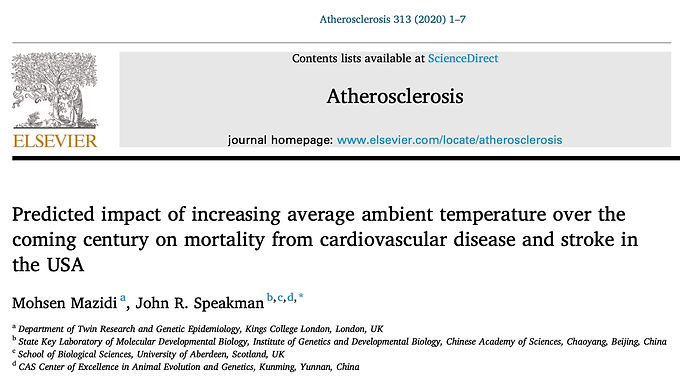Predicted impact of increasing average ambient temperature over the coming century on mortality from cardiovascular disease and stroke in the USA

Background and aims: Future climate change may adversely impact human health. The direct effects of extreme hot temperatures on mortality are well established, and their future impact well modelled. However, less extreme changes in ambient temperature (Ta) have been previously associated with increased mortality from circulatory and metabolic diseases, but their future impact is less clear.
Methods: We evaluated the spatial association between cardiovascular diseases (CVD) and stroke mortality with average Ta across the US mainland, and then used this relationship to model future temporal trends in mortality from CVD and stroke until the end of the century (2099), using different warming scenarios for each US county. Results: Ta was significantly associated with crude levels of CVD mortality (R2 = 0.269) and stroke mortality (R2 = 0.264). Moreover, there was a strong positive link between Ta and physical inactivity (PIA) (R2 = 0.215). Once adjusted for PIA the associations between Ta and CVD and stroke mortality were much reduced (R2 = 0.054 and R2 = 0.091 respectively) but still highly significant.
Conclusions: By 2099 modelling suggests between 8844 and 25,486 extra deaths each year from CVD, and be- tween 2,063 and 13,039 extra deaths for stroke, beyond the increases expected from population expansion. Mortality due to changes in the mean Ta may be as, or more, significant than the impacts of extreme hot weather events.
